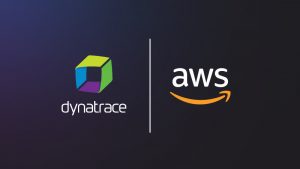At Perform 2023, Dynatrace CEO Rick McConnell kicks off the conference with a look at the state of the industry, cloud optimization, and why modern observability is no longer optional.
The benefits of the cloud are undeniable. With increased scalability, agility, and flexibility, cloud computing enables organizations to improve supply chains, deliver higher customer satisfaction, and more. But the cloud also produces an explosion of data. And with that data comes the thorn to the cloud’s rose: increased complexity.
“The cloud is delivering an explosion of data and an incredible increase in its complexity. And it is making it more and more difficult for all of us to manage that wealth of data,” said Rick McConnell, CEO of Dynatrace, at the annual Perform conference in Las Vegas. “We need automation and observability to drive and address that issue.”
According to the 2022 Global CIO Report, 71% of CIOs from large organizations said all this data is beyond humans’ ability to manage. That’s why, in part, major cloud providers such as Amazon Web Services, Microsoft Azure, and Google Cloud Platform are discussing cloud optimization.
Cloud optimization has two major components, according to McConnell: cost optimization and mission-critical workloads.
“We believe this incredible wave of digital transformation all the way through cloud optimization is really just driving one set of factors, and that is to [shift] observability from optional to mandatory,” McConnell said. “You just can’t manage all this [data] manually. You have to get automation and analytical capabilities.”
Modern observability is no longer a nice-to-have
While data can provide a wealth of information, it’s often difficult to derive critical insights unless teams can view it holistically—without silos. Modern observability allows organizations to eliminate data silos, boost cloud operations, innovate faster, and improve business results.
“As we move [observability] from optional to mandatory, we believe the solution is to provide in your ecosystems end-to-end observability,” McConnell said. “It isn’t about looking at siloed data types, [and] it isn’t about only looking at application performance monitoring or infrastructure or real-user monitoring. It is about the collection of all of those together.”
Traditional cloud monitoring methods can no longer scale to meet organizations’ demands, as multicloud architectures continue to expand. IT teams can resort to playing defense, fighting daily fires rather than focusing on more important tasks, like innovation. That’s why teams need a modern observability approach with artificial intelligence at its core.
“We start with data types—logs, metrics, traces, routes. Throw in behavioral analytics, metadata, and real-user data,” McConnell said. “If you are looking at them in isolation, you’re missing the point. You have to look at them collectively. And if you do, and if you have an AIOps engine [which brings AI to IT operations] that enables that process to be effective, that makes you so much more powerful in the management of that ecosystem.”
Shifting from incident response to incident prevention
In a world where so many digital activities are readily available and instant, downtime is downright unacceptable. With a global shortage of IT resources, teams simply don’t have time for downtime. Shifting critical resources and staff away from innovation and high-level tasks to deal with break-fix issues is bad for business.
“It can’t be about break-fix, it can’t be about rapid response, it can’t be about MTTR [mean time to repair]. It has to be about not having an incident in the first place—no downtime,” McConnell said.
So, how do you fix it? Enter AIOps, automation, and a unified approach to modern observability.
According to the Global CIO Report, 93% of CIOs said AIOps and automation are increasingly vital to alleviating the shortage of skilled IT, development, and security professionals and reducing the risk of teams becoming burned out by the complexity of modern cloud and development environments.
“Because we all [have] constrained IT resources, we can’t just continue to ship new applications and new infrastructure with the same number of resources and expect a good outcome,” McConnell said. “We have to do better than that.”
Collaboration and data consolidation are key to success
When it comes to data silos and delivering business insights, team collaboration and consolidation are key. With a unified, modern observability platform, teams across an organization can work together on data-driven issues to identify problems.
“We believe the evolution of software to work perfectly is going to be around the analytics, automation, AIOps, and the causal AI capabilities that we can provide to ensure [teams] have the technology to run [their] software effectively,” McConnell said. “But it is also about process automation. And it is about making sure from the development team structure all the way through IT operations and business operations you have one plan of attack and shared responsibility for delivering software that works perfectly.”
For the latest news from Perform, check out our “Perform 2023 Guide: Organizations mine efficiencies with automation, causal AI.”





Looking for answers?
Start a new discussion or ask for help in our Q&A forum.
Go to forum